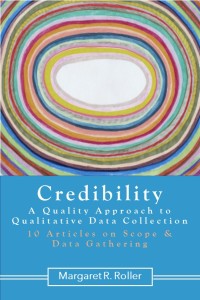Unlike the relatively sterile environment of quantitative research, a unique and essential component of qualitative research designs is the deliberate fostering of the participant-research relationship. This unique attribute of qualitative research is highly compatible with what it means to conduct qualitative methods; that is, to prioritize the human element of our research.
The focus in qualitative research on the interaction of human beings is manifested by the care that is taken in the:
- development of the appropriate sample design;
- techniques and approaches that are used to recruit participants;
- attention to mode preferences;
- intense training required of the researcher in order to establish rapport with participants while also gaining useful data towards meeting the research objectives; and
- data analysis process which is a holistic approach that “is centered on the entirety of each lived experience or group of experiences related to the phenomena under investigation and specific research objectives.”
As central to both the raison d’être of qualitative research and its priority in research design, the participant-researcher relationship potentially impacts research outcomes. As stated by Roller & Lavrakas (2015),
This relationship is at the core of [in-depth interviews] IDIs, group discussions, participant observation, and narrative research, wherein participants and researchers share the “research space” in which certain conventions for communicating (knowingly or not) may be formed that in turn shape the reality the researcher is capturing in the data. For instance, depending on an interviewer’s ability to build rapport with an interviewee, the IDI participant may be inclined to respond to interview questions in a socially desirable or normative manner; for example, a mother may exaggerate the extent to which she buys healthy foods for her children. This social component that is embedded in the participant–researcher relationship drives the “power dynamics” (Kvale, 2006) of the research environment in which both parties—participant and researcher—strive to control what is said and not said (e.g., the interviewer generally controls the questions that are asked, but the interviewee may elect to withhold information). [The Total Quality Framework addresses] this power struggle, its implications for the integrity of research data, and the strategies that can be utilized in the research design to mitigate its effects. (p. 6)
All of the 10 unique attributes of qualitative research are associated in some way with the humanness of qualitative methods. Yet the participant-researcher relationship is fundamental to the other nine attributes and speaks loudly about the role of “being human” in qualitative research.
Kvale, S. (2006). Dominance through interviews and dialogues. Qualitative Inquiry, 12(3), 480–500. Retrieved from http://qix.sagepub.com/cgi/doi/10.1177/1077800406286235

 In
In 